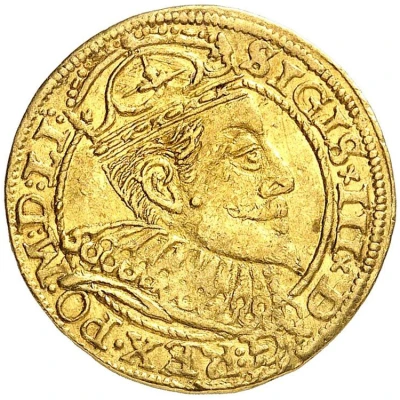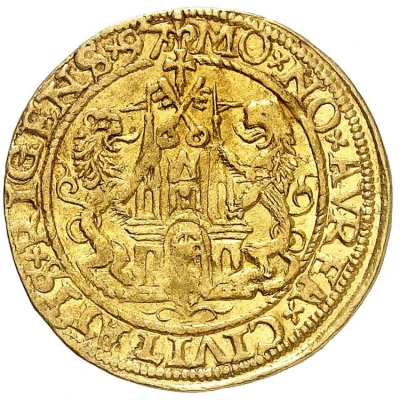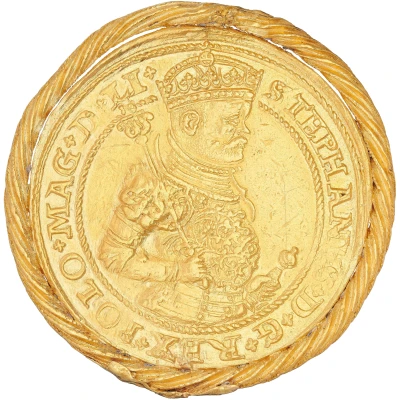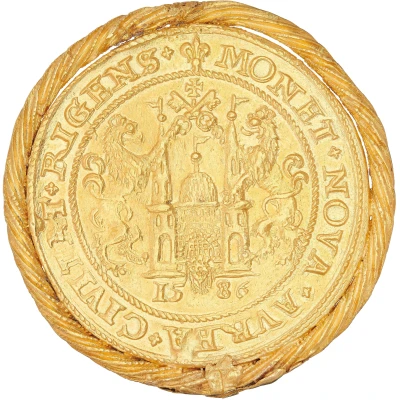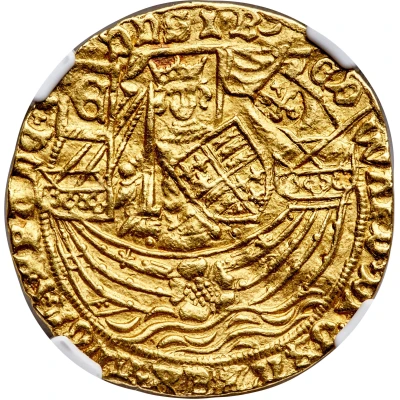
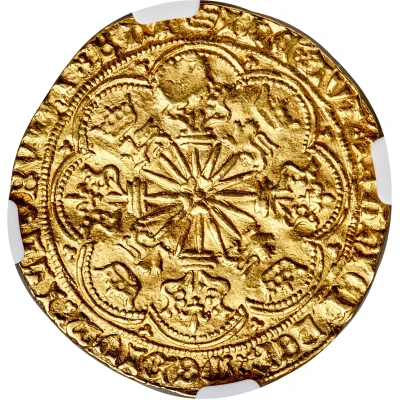

© Heritage Auctions
1 Ryal - Anonymous Riga; Countermark ND
| Gold | 7.58 g | - |
| Issuer | Duchy of Livonia |
|---|---|
| Duke | Sigismund III Vasa (1587-1629) |
| Type | Standard circulation coin |
| Years | 1561-1621 |
| Value | 1 Ryal (10) |
| Currency | Thaler (1581-1629) |
| Composition | Gold |
| Weight | 7.58 g |
| Shape | Round |
| Technique | Countermarked |
| Demonetized | Yes |
| Updated | 2024-10-06 |
| Numista | N#330697 |
|---|---|
| Rarity index | 100% |
Reverse
Rose over sun over cross fleurée with crowns and lions, small trefoils in spandrels.
Lettering: IhC’ · ΛVT’ · TRΛnSIЄnS · PER · mЄDIVm · ILLORVm : I · BΛT
Translation: But Jesus passing through their midst went on His way
Comment
Riga counterstamp, on 1 Ryal of Edward IV, Sp#1951 (see first link)Heritage proposes that this issue may have been struck during the 1621 siege of the city by Gustavus Alolphus, one of many battles in Livonia during the Polish-Swedish wars of the early 17thcentury, based on an analagous counterstamped rose nobel of Gorinchem (see second link), but they admit there is no direct evidence to support this claim, and that there was also a longstanding history of counterstruck coinage in Riga dating to its time as a Free City (1561-1581).
Based on the currency system at the time, a gold coin of this size would have been valued at about 2.2 ducats (Riga 1561-1581) or 10 thalers (Livonia 1581-1621)
Interesting fact
One interesting fact about the 1 Ryal coin from the Duchy of Livonia is that it features a unique countermark, which is a small stamp or marking that was added to the coin after it was minted. The countermark on this coin is a small letter "R" or "r" that was stamped on the coin to indicate that it was issued by the city of Riga. This countermark was used to verify the authenticity of the coin and to distinguish it from other coins that were issued by different cities or territories. The use of countermarks on coins was a common practice during this time period, and it helped to prevent counterfeiting and ensure the integrity of the currency.
